(first posted 5/9/2017) Last week, Paul showcased this 1977 Chrysler New Yorker Brougham Coupe, which was really nothing more than a recycled ’74-’75 Imperial LeBaron. The post generated a lot of Chrysler love, as well as questions on how this car was perceived, relative to its competitive set, back when it was new. Well, we have an answer: in the May 1975 issue of Road Test Magazine, the editors compared American Luxury Coupes as they entered the twilight years of the Automotive Cretaceous period. They highlighted what was right–as well as what was wrong–with these biggest-ever luxury cars, and even picked a winner.
In keeping with the buff book mindset of the time, Road Test’s editors had to admit their general disdain for giant American luxury cars, since they did not handle particularly well and were very inefficient with both fuel and space. That said, RT had to acknowledge the cocooning effect of the big beasts, as well as their impact as status symbols.
By far, the leader in luxury in America, circa 1975, was Cadillac. Sure, premium European imports were gnawing away at the upper echelons of the luxury market, but for sheer volume, no one beat GM’s prestige division. In fact, Cadillac’s 1975 sales total of 263,403 was more than the sales of rivals Lincoln, Imperial, Mercedes, BMW, Jaguar and Volvo combined! The Coupe DeVille was the most popular Cadillac of all, with the whopper 2-door selling a whopping 110,218 units.
Unfortunately for GM, that popularity would prove to be a double-edged sword. Part of the allure of luxury is exclusivity, and with so many Cadillacs being cranked out, they became boringly commonplace. Plus, Cadillac was resting on its past laurels—the cars themselves were no longer that special either, with Road Test noting a few too many similarities with the more plebeian Chevrolets. This cost cutting may have allowed Cadillac to be highly profitable while driving volumes higher, but by 1975 the brand was losing the top end of the market—badly—to Mercedes. While the as-tested price of RT’s loaded midrange Coupe DeVille of $10,908 ($50,842 adjusted) was far from cheap, it was priced well below Mercedes-Benz’s midrange 280 sedan, which had a base price of $12,756 ($59,456 adjusted). At the top of the Mercedes line, the 450SLC sold for $22,053 ($102,789 adjusted)—in 1975 Cadillac had nothing remotely close to that price point. And in places the truly affluent called home—enclaves like Bel Air in Los Angeles, California, River Oaks in Houston, Texas and Upper East Side Manhattan in New York, New York—the Mercedes star instantly telegraphed the high price of the relatively small, functional cars to the status seeking cognoscenti.
Cadillac had once been a player in the super elite market (witness the Eldorado Brougham, for example, which sold for $13,074 in 1958–$111,010 adjusted), but the division gave up on exclusivity and pricing power in the quest for easy profits at high volumes. The rot wasn’t yet fully apparent in the mid-1970s—Cadillac still had a great deal of cachet, but the damage would be clear within a decade.
Chrysler Corporation had already learned the hard way that a luxury product, no matter how good, cannot be seen as too closely aligned with cheaper cars—that was the sad fate of the flagship Imperial, out for a final hurrah as 1975 came to a close.

The problem with the Imperial, as Road Test pointed out, was the car’s schizophrenic nature. On the one hand, the Imperial was enormous and featured dramatic styling—but it shared a bit too much commonality with “lesser” Chryslers. The Imperial offered more responsive handling than the competition from Cadillac and Lincoln, but that was not what most American luxury buyers wanted. Likewise, buyers seeking engineering excellence and road feel would have been turned-off by the bulk of Chrysler’s flagship. Therein was perhaps the biggest issue with the Imperial: the brand positioning did not resonate with luxury buyers, nor did the $10,440 price ($48,661 adjusted) seem worth it. Only 8,830 Imperial were sold for 1975, including 2,728 2-doors, of which 60% (1,641 units) had the Crown Coupe package like the test car. However, despite low production numbers, the car was simply not exclusive or unique enough to justify its price, and came across as nothing more than a dressed-up Chrysler. In a market segment where brand image was a critical purchase criterion, the Imperial failed miserably.
Ironically, Chrysler’s Motown rivals did not heed the lesson of the Imperial’s failure. Both GM and Ford Motor Company ultimately allowed their uppermost brands to become increasingly unfocused with too much commonality with far cheaper cars—the antithesis of true luxury.
Think of Cadillac today: is it the maker of make-believe German high performance sedans; or sleep-inducing soft-roaders to tempt the Lexus RX crowd; or ostentatiously over-priced and minimally differentiated Chevrolet Tahoes/Suburbans? Would the real Cadillac please stand up?
Lincoln doesn’t get a free pass either…. Or should I say Mercury. After all, like a 21st Century Marquis, today’s Lincolns are little more than dressed-up Fords–witness the Ford Edge/Lincoln MKX CUVs. Even the new “flagship” Continental, with its “luxury” seemingly derived from a plethora of powered pushbuttons, is merely a stretched and massaged front-wheel-drive Fusion.
For Lincoln in 1975, however, things were different. The 1970s had actually been great years for the FoMoCo flagship division. While the upper-crust elegance of the suicide-door Continentals of the 1960s was long gone, sales soared (doubling between 1970 and 1975, reaching record highs for Lincoln) due to the success of the flashy Continental Mark III and even more flashy Continental Mark IV starting in 1972. The 2- and 4-door “regular” Continentals also surged in popularity, though just like GM with the Chevy/Caddy connection, the Lincoln sedans had become nothing more than the ultimate LTD. However, Lincoln (with Kudos to Lee Iacocca) knew how to package showy luxury cues to maximum effect on the ’75 Continental, an accomplishment Road Test’s editors were quick to acknowledge.

Road Test found that the Lincoln attracted the most envious glances, was the quietest, the most comfortable and the easiest to operate. On the flip side, handling was poor, as was braking. For this class of car at the time, however, status and comfort outweighed skid pad performance, so the Lincoln performed well against the attributes that mattered most to American luxury buyers. Total Lincoln sales were 101,843, up 8% from 1974. The Continental accounted for 54,698 of those sales, including 33,513 sedans and 21,185 coupes. At $11,893 ($55,433 adjusted), the Continental Town Coupe was the most expensive in the test, but it was also loaded with optional goodies. One interesting note that would prove prophetic: Road Test questioned the long-term reliability of all the electronic gadgets, noting that while the basic engine and body could last for the long haul, the glitch-filled “high tech” gizmos had the potential to infuriate customers and/or prematurely end the life of the car. True then, even more true now.
Road Test’s conclusions in 1975 regarding the future of the luxury market are interesting to read from today’s perspective with the benefit of hindsight. The editors completely missed the mark with their prediction that luxury and luxury features would be a temporary phenomenon. In 1975, luxury brands accounted for 5% of total U.S. sales; in 2016, they represented 12%. Today, even basic subcompacts are loaded with equipment formerly reserved for the high-priced leagues: Nissan’s 2017 Sentra comes with standard equipment and luxury options that would make a ’75 Cadillac blush. No wonder the average price of a new car has risen from $4,950 ($23,163 adjusted) in 1975 to $33,560 as of today.
However, the editors were correct in predicting that luxury buyers would increasingly demand more rational cars with better handling, braking and efficiency—that future would arrive within a few years of 1975, ushering in decades when automotive fashion centered around packaging efficiency and higher levels of driver engagement and control. Ironically, in 2017 the market pendulum has swung firmly back to rolling image statements that emphasize cocooning and disconnectedness. The major trends currently in play:
Huge trucks as personal-use vehicles, deliberately designed to look as massive and menacing as possible….
Cars masquerading as trucks….
Or rolling iPhones serving as transport pods, allowing operator/occupants to simultaneously surf the web and save the planet (at least in the opinion of their social circle, if not in actuality), enabling an idealistic escape from the annoyance of driving and interacting with real people: perfect individual virtual nirvanas.
So it looks like vehicular isolation is back with a vengeance. Maybe the suit-clad, harried mid-1970s business executive and the sweats-clad, multi-tasking 21st Century tech worker are actually more alike than would initially be apparent? Perhaps appropriate for our neo-pre-apocalypse era.
But back to 1975. Road Test didn’t fully come out and anoint a winner of the test, but based on their summary, it’s pretty clear the editors preferred the Lincoln. The Continental Town Coupe was seen as the car that best met the aspirations of the segment, even if the handling and braking left a lot to be desired. Cadillac was seen as the best on paper, with the best spec sheet numbers and the best gizmos, but somehow the sum was less than the parts, and it was clear where corners were cut. Apparently, some things never change at GM: witness Cadillac’s current boasts of “beating” BMW on comparison tables—but not in the minds of actual luxury brand prospects in dealer showrooms. The Imperial? The nicest Chrysler would simply be a Chrysler for 1976, with Mopar basically ending its quest to offer a standalone luxury brand (let the debate ensue on whether either of the two Imperial rebirths–the early 1980s or the early 1990s–count as restarts of the flagship brand or simply new, short-lived applications of the flagship nameplate).
Now for our mini-QOTD, tied to this comparison test: if you were a luxury car buyer in 1975, which one of these would you have brought home?
For me, it is a surprisingly difficult question. When I try to imagine myself back then, I think the domestic luxury car I would have most wanted would have been the newly introduced Cadillac Seville. Rationally sized but still very American, the Seville’s handsome, chiseled lines would have been quite fresh (before the vertical rear window was slapped onto too many GM products). An added benefit: Seville was considered a huge status symbol right out of the gate, which was of course the point in the luxury class. But I digress—we are talking about choosing between the mammoths….
Hmmmm… Well, I would have wanted a 4-door, since I just can’t fathom handling the cumbersome coupe doors, which collectively would have weighed as much as a Corolla. Plus, for folks wanting a gargantuan 2-door image machine, the Cadillac Eldorado and Lincoln Mark IV would have been seen as even more “glamorous” than the sedan-based 2-doors.
So on to my picks in rank order.
In 3rd place would have been the Imperial. Don’t get me wrong, I definitely think it was a handsome car inside and out, with plenty of compelling attributes for a huge, traditional American sedan. But by 1975 it was obvious that the Imperial couldn’t cut it in the luxury league, and thus brought up the rear in the snob appeal sweepstakes—a fatal flaw in this market segment. Rechristened as a New Yorker Brougham for ’76, with a price reduction and repositioning in the Buick Electra/Mercury Grand Marquis/Olds Ninety-Eight class, the flagship Chrysler suddenly made a lot more sense and became a far better choice.
2nd place goes to the Cadillac. Still the hands-down winner from an image standpoint in 1975, the DeVille tested was something of a letdown, with too much cheap plastic and not enough hedonistic luxury for this type of car. The biggest, grandest Chevrolet in the land was starting to seem like a lesson from “The Emperor’s New Clothes,” with people seeing the luxury image they wanted in the Cadillac, but not fully recognizing the product reality that actually existed.
So the winner for me in 1975 would have been the Lincoln Continental. For its mission as a “look-at-me-I’m-rich” isolation chamber, Road Test placed it at the top and so would I. After all, it seems to me that if you were looking for the biggest, grandest barge of them all, then it made the most sense to get the one that actually was.
So that’s my choice, what’s yours?






























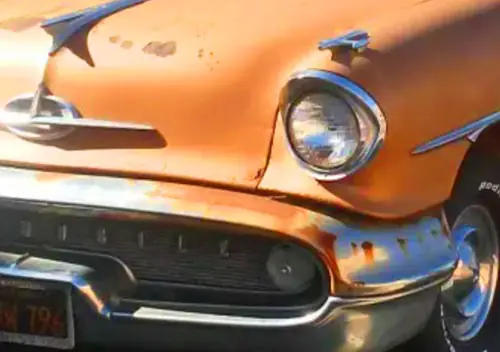
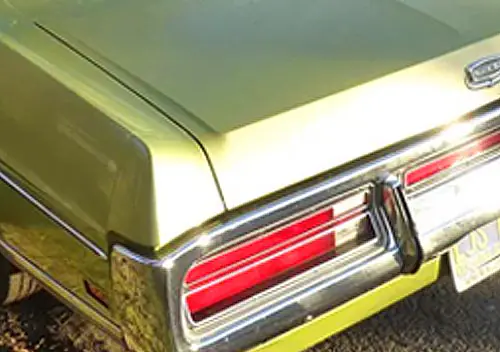
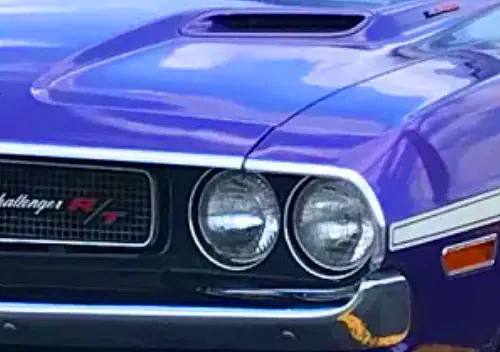

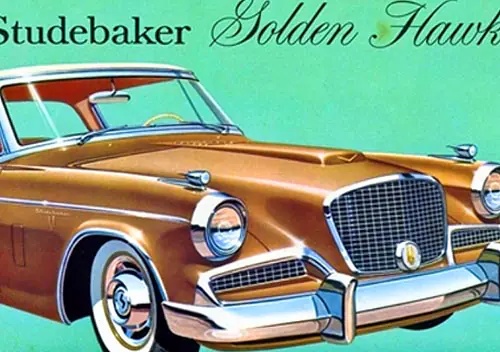
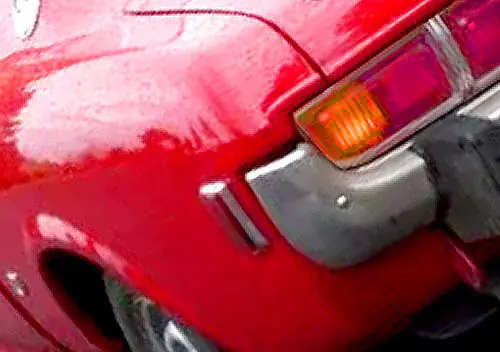

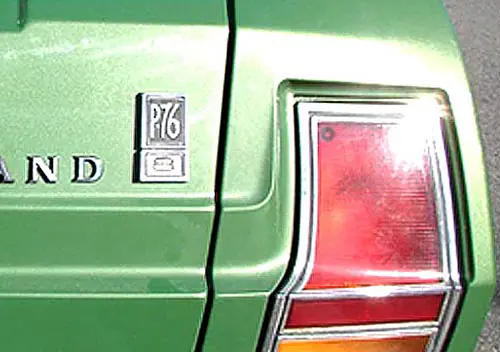
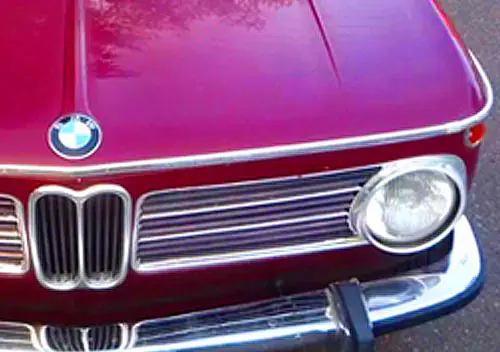
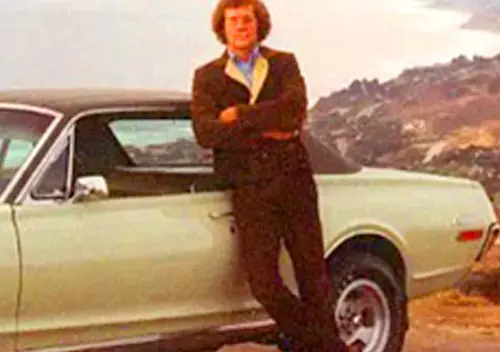

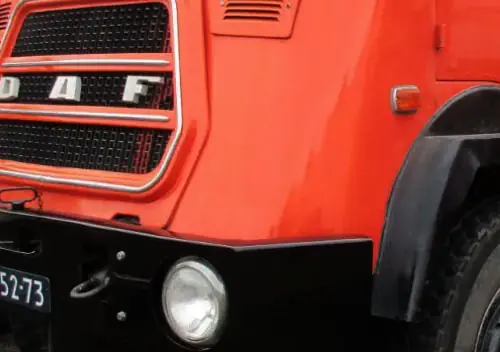
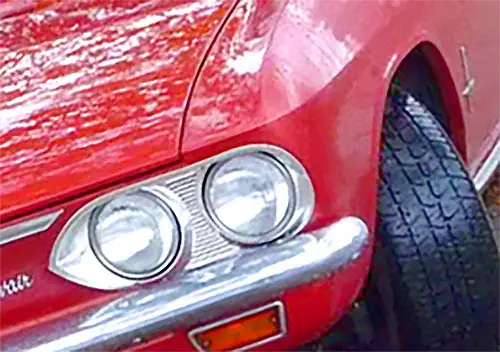
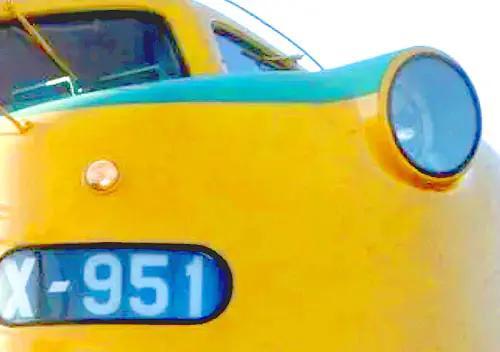
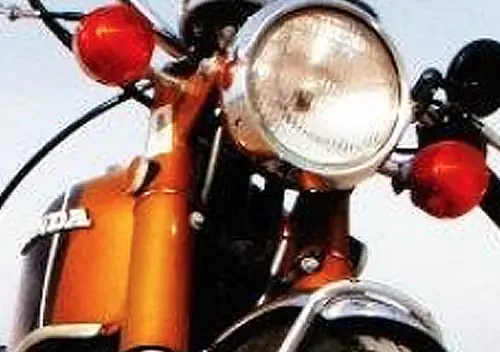
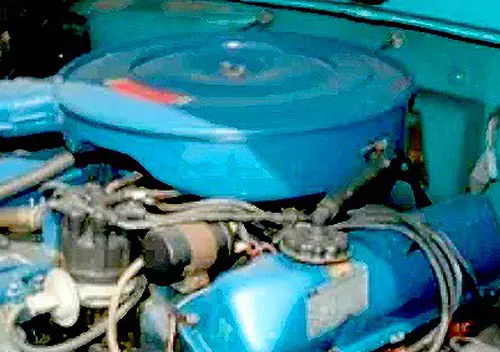



Great cars, my first choice would be the Lincoln, second the Imperial and last the Cadillac.
Tough choice. All have their relative merits, but I think I would have gone Lincoln, also.
If going personal luxury, it would be a Mark IV all day long. And, from having owned its sister Thunderbird for several years, these cars will make you a better driver as you have to judge spacing, distance, and turning much closer than what most of us are accustomed to doing. Do a few three-point turns in close quarters with one of these and before long you can navigate anything, anywhere.
The picture of the seats in the Lincoln make them look prematurely worn. It must be the scanning or aging ink in the picture.
I would have the Imperial, I’m just too biased that way, but it is such a beautiful car.
That waterfall grille is gorgeous.
I had no idea how much the Imperial looks like the Lincoln. Chrysler must have been really desperate to copy that design, much as they did in making the ’74 Monaco resemble the ’72 LeSabre and the ’75 Cordoba look like a ’73 Monte Carlo.
Aside from covered lights and a vertical grille, I don’t see any similarities.
The tail of the Imperial is a straight evolution of the 72 Imp. Everyone in Detroit was copying opera window coupe styling, introduced on the 71 Eldo and the colonnade midsizes. The Imp bodyside was the same as a Chrysler Newport that sold for half the price.
Add the 64-66 Imperial as well.
Hard pass on all three, although the Lincoln is the most appealing of them.
If I was going to shell out that much money on a bloated, floaty, oversized barge, I’d go for an Eldorado or (much more likely) a Mark. These full-sizers haven’t the (comparatively) restrained elegance of Caddies, Imperials and Lincolns of the 1960s. And they’re just too big, too inefficient, too unwieldy. I agree: a Seville is much more appealing.
And the way I see it, it’s worth spending more and getting a Cadillac today over a Chevy. If you buy an ATS, CTS or CT6, you’re getting a RWD platform, sublime ride and handling, plus extra luxury features. A Malibu or Impala is good, but it’s a whole ‘nother class. But back in 1975, was a DeVille really that much of a step up over a perfectly nice Electra or Ninety-Eight? Different engines, sure, and maybe a few extra goodies but I don’t see the value proposition. (Although I will point out I don’t see the point in paying more for an Escalade over a Yukon Denali)
Lincoln today? They’re much more closely related to Fords but I think Ford is doing a better and better job at differentiating, even considering how nicely loaded you can buy a Ford. I like the Black Label interior schemes and those absolutely phenomenal seats in the new Continental. But then again, an MKZ or a Continental is still related to a Fusion, much like Lincolns of the 1970s had LTD or Thunderbird in them.
“sublime ride”
I’m not sure how much that applies to an ATS or CTS. I think their biggest problem is in fact chasing the German sporty-ness and in the process losing that traditional American ride comfort. In fact, it’s the FWD Impala that is generally regarded as having a good compromise of smooth ride and competent handling.
Well in fairness, sportiness seems to be what sells luxury these days. Personally, I still don’t equate performance with luxury. If I want to sacrifice comfort for performance, I’d just go with pure performance. I don’t find any modern “luxury” cars all that appealing. The pendulum has swung too far into performance territory IMO. Perhaps if you live in the South with pristine roads that’s OK. But here in the Midwest, no thanks.
Same here, I have no interest in sporty “luxury”. Gimme chrome, wood, and float!
My ATS’s ride was firm. The CTS, with magnetic shocks is quite good.
What was the reliability like for the ATS? I’ve read stay away, but the size of them appeals to me, (I’m not in NA).
I’ve driven a current CTS, without the optional Magnetic Ride Control. And it softened out ruts and bumps with ease and felt exceptionally solid and poised, while still being able to thrill on a winding road. I imagine the ATS, sharing the same platform, would deliver almost the same ride quality (perhaps slightly worse on account of its shorter wheelbase).
I think the biggest problem for these new Cadillacs is traditional Cadillac consumers think they’re going to be too sporty or radical, and traditional European consumers think they’re going to be too traditionally Cadillac.
The Impala may have a good compromise of smooth ride and competent handling, but the ATS and CTS have a good compromise of smooth, well-damped ride and _great_ handling.
Sorry, but I want a car that cossets and irons out bumps but doesn’t fall over in corners. There needs to be a balance, and that’s why I’ve never really cared for most Broughams.
Go to the Cadillac forums and you’ll see a lot of CT6 owners complaining about harsh ride.
Imperial – yes the fact that it actually had a modicum of handling was the antithesis of what the segment was supposed to represent but that is part of the appeal for me given that I would intend to drive the car as opposed to being driven in it.
I also don’t care that the Imperial is the least prestigious, let others worry about what the neighbors think.
I remember this article. These were my favorite kinds of cars in 1975 and I bought this magazine as soon as I saw the cover.
This is a hard decision for me. The Mopar fan in me wants the Imperial. It is the most beautiful of the three and is the most responsive. However, with Chrysler’s hit and miss quality of the time, you never knew what you were getting. Also, they had horrible resale value back then (which is why my father kept telling me that he would never even consider one).
The Lincoln is the best executed. These were smooth and quiet cruisers in a way that may not have been bettered to this day. The interiors were made of decent materials and they had real presence. These were probably the best cars coming out of FoMoCo then.
The Cadillac – at the time I considered it the car for showoffs and not for those who knew anything about cars. The interiors were really disappointing, particularly the “woodgrain” contact paper on the door and side panels in places where no wood could ever be. Time has proven that these had robust mechanicals, but then so did the others. So had I been shelling out my own hard-earned money then, Lincoln all the way.
A friend of my mother bought a new 74 Coupe DeVille and brought it over to show us. I remember looking at the woodgrain trim on the door panels and the inside rear side panels. All I could think of was contact paper, because they were putting woodgrain places where no natural wood would have been possible.
The foam side padding with its thin vinyl skin looked very cheap. It was certainly soft, but experience showed that the stuff cracked easily in cold weather.
These Cadillacs had a lot to recommend them, but interior materials quality was not one of them. Other than the great leather seats, the whole inside of the car was plastic. And not good plastic.
I remember sitting inside Cadillacs of this vintage at the Harrisburg Auto Show and being surprised at the wood grain trim on the upper door panels. It was so obviously fake, even to my young eyes!
The 1974 Coupe DeVille ( exact back seat like you showed a picture) was my very first brand new cadillac. I was only 22 years old and worked very hard and was successful. I knew it would be a re-styled car , and I had some pre-glipses in Motor Trend Magazine of what it would look like . I ordered it in the summer for my Cadillac dealer and it came in along with the new showroom models . I miss that car ! Frankly, to this day that car in in my mind. It was smoother quieter, more of a pleasure to drive than any car I’ve had since. And I’ve had everything going up the chain from Jaguar Mercedes to Bentley and Rolls-Royce. The car was actually a very a reliable machine too. lasted 30 years. I loved the Cadillac more than the Lincoln or imperial because they seemed really bloated and gimmicky.
I reluctantly agree with everything J. P. C. mentions in the above.
These coupes were then and still are too big for me.
If money were no object then I would opt for the Seville for my wife and the Mark IV for me. Of the three, I would go for the Lincoln as my top pick followed by the Imperial and then the Cadillac. My dad would have bought the Lincoln in a heartbeat followed by the Imperial. The Cadillac would never have been considered as my mom was not a Cadillac fan believing they were driven by parvenus.
That said, I think the practical side of me would have leaned towards the Buick Electra/Oldsmobile 98/Chrysler New Yorker/Mercury Grand Marquis as the better buy.
At the risk of having my Flint-card revoked for not choosing the GM product, I’ve got to say that in 2017, the Imperial LeBaron holds the most appeal for me – inside and out.
It’s tough for me, though, to imagine what my choice would have been back then, as I was in diapers when these cars were new, and can’t really understand how consumers were reacting to Chrysler’s quality control issues of the day. No one really wants to identify with the “loser”, but on it’s own merits, the LeBaron is mighty appealing.
Another fantastic read and essay, GN.
I would have to say the Cadillac, Only because its the only one I have any real experience with.
My friends dad had one in middle school a triple light blue Coupe de Ville.
It was a nice enough car and we had a 76 Buick Park Ave Limited.
These were old cars by the time I was riding in them.
But in all honesty I would take a Park Ave over the Caddy.
It might have had a few more fussy details but it was a little less ostentatious to me.
But then I have never been a Luxury car person, I prefer smaller easy to handle cars
Great read and lots of insight! To answer your question, my choice would be the Imperial, preferably in 4-door hardtop form. I like exclusivity, and I find the Imperial’s styling the most glamourous. The Lincoln was too blocky and clumsy looking like an elephant in ballet shoes. The Cadillac’s styling, even then, was looking commonplace and staid. I’ve always loved these final Imperial’s elegant styling cues, though I do find the 4-door’s proportions far more graceful.
Also, anyone else notice how in the first picture, the Imperial and Lincoln look so much alike from the same angle? And people say only today that all cars look alike 🙂
Yabut, the Chyrsler styling dept of the time was pretty much a guy that would go and buy the first copy of a new Ford or GM product bring it back to the “studio” and tell the “stylists” to make a car that looks just like it, just not exactly like it, so we don’t get sued. So you had a Chrysler that looked just like a Lincoln or a Chevy and Dodges that looked just like Buicks by design.
I recall reading somewhere that Lynn Townsend was ready to call the Imperial done after the 1973 models were scheduled to finish their run. But this drawing (and the fact that it could be built on the same body as the regular Chrysler) got the green light for a 1974 model. This explains why this car was so much more like regular Chryslers than any Imperial since 1954. I have never seen this in print, but I believe that this Imperial was the car that drove styling for the 4 door hardtop body (which had a very distinctive sloping roofline that was so different from the blocky Newport and New Yorker sedans.)
Unfortunately, as beautiful as the car was, it still could not break out of the same awful sales range that Imperials had been struggling with for years and the cars were dead after 1975.
I may have already posted but the 77 NYer in white coupe’ with tufted burgundy Corinthian leather(how many Corinthians did it take ?) grabbed my by my 19y.o.soul and I told my mom I found her new car. She grabbed the cash($7k?) and promptly went down to the local stealer and bought the white coupe on the floor. It was cool for an emasculated 440 and my pal’s Yamaha MX125 even fit in the trunk with bars and wheels off.
Here’s my mom ‘n me back in the day holding some winnings…
The sculpture in the top photo gives me heartburn. Its a bit odd for an upscale shopping center. However, it was the 70’s!!
I was also curious about the sculpture, and it is distinctive enough that a Google search (outdoor sculpture at SoCal malls) helped me figure out the details. Turns out the work was called “Skydivers” and was created by the sculptor Aristides Demetrios. It was commissioned in 1967 for the Fashion Island Shopping Center, located in Newport Beach, CA.
Apparently, when Fashion Island received a huge renovation in 2010, the development company offered to donate the sculpture to the City of Newport Beach, but the city turned it down, since it would have cost $135,000 (!!) to restore and relocate the artwork. Not sure what happened to the “Skydivers” after that, whether they were trashed or stored somewhere, but they are no longer standing outside…
Here’s a closer view of the piece where you can see the “batons” being passed…
What a shame. I hope it’s still being stored somewhere! It’s a pretty cool sculpture.
I couldn’t believe it would cost $135 million to move and restore that, so I looked it up. It was $135 thousand. $35K to restore, and $100K to move.
http://www.latimes.com/tn-dpt-0310-art-20120309-story.html
Still interesting though, thanks for finding that out.
Egad, that’s a HUGE typo, thanks for catching. You’d think I was a government contractor with that kind of inflation…
I fixed the text of my comment, but the sentiment remains: I still think $135K was quite a lot of money to fix and remount the statues.
I searched for “Fashion Island”, simply because the name seems very, very luxo-70s, and the perfect place for a photo shoot.with the 3 cars.
It’s still there. Part of me wanted it to be a real island, but no luck.
As much as I do revel in silence, luxurious interiors & a smooth ride today; these 3 were then and are now just too dayumed big for my tastes. Driving one of these behemoths in today’s congested city traffic conditions would be a thankless task!
The “downsized” Caddys & Lincolns of the early 1980’s are what I would choose.
In particular, I view the Lincoln Town Cars (sorry, Paul, I know you loathe these!) and the Mark VI coupes as the ones to choose to buy and keep. The older these models become; the better they look and drive to me.
Journalists and the public were noticing less and less distinguishing features between GM’s brands. From Ford too. This was era when cars became similar. Heck… Today’s Camry has all the luxury features of a Buick. Even a kowly KIA Rio gas pwr windows and AC
I road in a family friend’s ’76 Imperial coupe as a kid. I thought it was one of the coolest cars that I’d ever ridden in at the time. It was like gliding down the road on a couch with a nice engine note.
I’ll take a green on green with the 440 please.
Remembering that 4-door Continental that my father had. Same colour. The 460 was smooth and quiet. You were sure that it was running when it was new. It had disc brakes all around and actually stopped quite well. As for turns- forget about it, you needed to drive it like a limo with a diamond merchant cutting diamonds in the back seat. As for parking on the street or in the garage you needed lots space.
Everyone probably expects me to choose the Lincoln, but I can’t. It’s just too damned blocky. My pick would be that dark red Imperial four door shown above. Not only is it the best looking, but it offers the best driving dynamics – relatively speaking, of course. And oh, that button tufted upholstery…
I grew up in a strictly GM family so I was accustomed to their driving and handling characteristics back in the Seventies. At that time I had the opportunity to drive a ’76 Town Car. It felt like the car had to think about my inputs before it performed them because there was a very noticeable lag with everything. It listed horribly in turns and didn’t take much to make the tires howl. He steering was way overpowered, in my opinion, and provided no feedback whatsoever. Hard braking was an adventure as well. All in all I decided its road manners were poor to the point of being unsafe.
70s Ford products had awful steering.
Agree.
FoMoCo was always (at least) one generation behind GM in power steering quickness of gearing, road feel and lack of center wheel slop.
Mopar was just as bad, if not worse.
With the “Panther” based cars, FoMoCo finally became modern in their power steering systems and improved on it as the years went by.
Just MY opinion.
Note many of those FoMoCo and ChryCo cars had GM steering as their Saginaw division was the #1 supplier of steering components from the box to the pump to the column. While Ford and Chrysler didn’t use them exclusively they still bought and installed a lot of Saginaw components from GM as did AMC and IH. https://www.hemmings.com/magazine/hmn/2006/09/Saginaw-Power-Steering-Pumps/1332012.html
Of course as mentioned in that article while the basic pump or box may use a lot of shared pieces there are enough pieces that are spec’ed for a particular application that the experience behind the wheel could be quite different. Different spring rates in the pump or box can make a big difference in the amount of boost and road feel.
You’re not meant to *steer* a ’70s Lincoln. ’70s Lincolns were for CEOs-big picture types, not middle managers-micromanagement types. You’re meant to *guide* it. If you’re *steering*, you’re doing it wrong. If you’re *steering* it, you’re fighting the car’s moral compass at least as much as if you’d asked a hardcore vegan to join you for dinner at the Big Texan Steak Ranch. If you’re *steering* it, you’re getting in the way of the “team” instead of helping.
Speaking as someone that had these two things in the driveway simultaneously (until an unfortunate incident took out the Fiesta ST), once you understand the difference, driving one is an absolute delight.
“You’re not meant to steer a 70s Lincoln.” They were kind of like driving a boat. Give her some throttle, back off, see where she drifts, and then give her some more. There was a definite feel to driving such cars, and you had to know their limitations. Between the overassisted one finger power steering, to the boat like handling, to their enormous size, I don’t think that a quick test drive does them justice. They take a day or two to get used to. My choice would be the Lincoln. They got my attention new and still do.
Exactly. My dad owned a 1977 Lincoln Town Car sedan with the 460 from 1984 to about 2004. Driving a boat is the apt comparison. You make an input, and over time you notice that your direction or speed has changed.
My point exactly. I could never imagine making an evasive maneuver or a panic stop in this car. It seemed very irresponsible to design a car this way.
hello
I’d put Imperial at the top of my list, mostly because I have the least experience with the big Chryslers of the era, and it would be a bit of a novelty to me.
I grew up around big Fords and GMs of the era, learned to drive in them, and even owned one for several years. I give big Fords credit for quiet and isolation compared to the GM cars, but the Ford handling was marginal for the times, and really unacceptable today. The GM cars went about their business in a competent manner in just about all respects, and were generally the preferred American cars of testers like Consumer Reports.
The GM divisions must have still had enough autonomy at the time that GM interior quality was psychotic. I’d concur with JPC that the fake wood in Cadillacs of the era was a total turnoff – it turned me off when I was 11 years old in 1975! The 1972 Pontiac Grandville I eventually owned featured minimal fake wood, mostly on the dash, and it was wood grain painted metal, not plastic. It looked passably like wood and grain painted metal had a long history in cars. Compared to the ugly plastic on the Cadillac dash, my Pontiac almost exuded quality.
I generally prefer the four door versions of all these cars, but if I had to pick among these two doors, another reason I’d go Imperial was the availability of a true two-door hardtop with roll down rear windows. I was never a fan of the Imperial’s “Crown Coupe” top treatment (also known as the “St. Regis” top on other big Chryslers). Lincoln probably best handles the top treatment of the new looks prevalent in the mid ’70s, but for my money, this would be the sexiest of these coupes………….
Easy question-the Lincoln, hands down. I find the styling of that era’s Cadillacs garish, and the Imperial, much to the editors’ point, has that whiff of Chrysler about it in a way the other two don’t. That said, I’d have to give those tufted leather chairs a second look before I wandered off. But, the Lincoln styling was beautiful, the seats fantastic, and the overall design inside very very nice.
With the benefits of hindsight and direct prolonged exposure to two of the three cars here (give or take a year), I have to agree with the article’s conclusions. A friend has a ’75 El Dorado convertible. It’s no garage queen, to be fair, but dismissing the state of wear the interior of that car is atrocious! The “wood” was just tacky badly-molded plastic stuck up wherever they felt like. The ’70s Lincolns (the same friend has a 1976 Town Coupe, and I have a ’78 Town Coupe) used wood appliques over metal pieces, but they look more like wood would look and the design of the interior is much more pleasant to the eye.
What a great read, though! Thanks for posting it!
1975 will always be a special year for me as it was the first year I acquired all the domestic brand brochures: Chrysler, Ford, all the GM brands, and AMC.
Because I was only 10 that year, there were things I liked about all of the above cars.
Imperial: I liked the seats. Those pillowed leather seats look so fancy and special. Plus, the flowing lines of the exterior. I think this is the most aesthetically appealing, even though by 1975 it’s fuselage style had become dated.
Cadillac: As the article states, I think Cadillac was still the king of status in the U.S. So it definitely wins that contest. Also, I like the dashboard of the DeVille. More modern and appealing. Plus, the warning lights are at eye level. No looking all over the dash every time you hear a “buzz” or “ding”.
Lincoln: My mother had a ’77 Town Car, so I have experience being in these. Very big, very roomy, and very thirsty (7-8 mpg, in town, with the A/C going).
I fell in love with the Seville when it debuted exactly 42 years ago this month! So, if we go back exactly 42 years ago, when all four of these cars were available, the Seville would’ve been the clear choice for me.
But out of the three in the article, I like the Town Coupe. I think it has the most presence.
1973 was considered the final fuselage.
Imperial for the purpose of answering the question.
But if I were buying then, none of them. Too big,too thirsty. Too much of everything.
When they came out I felt the same way. That hasn’t changed.
Later in the decade I would have had a hard time choosing between a Chrysler LeBaron or Mercury Grand Monarch.
No such dilemma with these three.
Well, despite coming from a predominantly Mopar family, I’d probably have to go with the Cadillac. Yes, material quality was lacking, yes, they were a dime a dozen and the gild was pretty much off the lily by ’75, but I still have a soft spot for these big ridiculous beasts. I fell in love with the ’74 Coupe de Ville my neighbor drove right up until 1982 when it really started looking like a mastodon among the newer cars on the road, and when I got my drivers license in late ’83 I still toyed with the idea of bringing that Caddy out of hibernation to make it my own. Fortunately practicality prevailed, but I’ll always have a secret desire for one.
In order I would’ve gone for the Lincoln Continental, Imperial LeBaron and the Cadillac Coupe Deville, I’m really surprised how great the acceleration was for the 1975 Lincoln considering there weren’t many cars breaking the 0-60mph in less than 10 seconds that year, the 0-60mph times is something I would expect in an early 70’s vehicle instead of a 1975 vehicle, my aunt used to have a 1979 Lincoln Continental 2 door coupe and I remember loving it.
First off, GN, thanks so much for taking the time to locate and scan this article for our morning’s perusal. I think I actually read this article on http://www.imperialclub.com, but that was some time ago, and it was refreshing to read it once again.
As for which of the three I would choose, I think I’d have as hard a time making a decision as the Road Test editors. As others have already mentioned, I think all three cars look vastly superior as four-doors. To my eyes, the coupes looks visually unbalanced, especially the Imperial. If we’re talking sedans, I think I would opt for the Imperial, as it seems to just strike the requisite balance between grace and gravitas. I’m also a sucker for the Imperial’s seats, though most accounts I’ve read confirm that in reality, they’re not as comfortable as they appear.
But since we’re talking coupes, I think, as much as it pains me to say it, I’d go with the Coupe DeVille. Yes, the interior is atrocious, but the crisp creases of the Caddy’s exterior give it a modern and dare I say, almost lithe appearance compared to the other two cars. It’s the perfect car to drive to the New Formalist shopping mall featured in the main photo.
We live in a different world 42 years later. Of the three stores whose names you can see behind the cars in the color group shot, only See’s Candies is still in business.
As for the luxury cars, if I’d been in the market and had the money in 1975, I would have bought a BMW 530i. Cadillac and Lincoln lost me with the bloated ’71s and to me, the last clean Imperial that didn’t look like a tarted-up Fury was 1971.
And the mall has probably been abandoned by now as well, Michael.
Actually, turns out that this location is Fashion Island in Newport Beach, CA, which routinely ranks as one of the top grossing shopping centers in the country, and now has anchor stores like Neiman Marcus, Nordstrom and Bloomingdales. Given the mall’s location in wealthy Orange County right next to the Pacific, it makes sense that it is still a huge shopping destination.
So it was a great backdrop for the lead photo in the article, given the upscale nature of the test cars. Today, however, rather than any Cadillac, Lincoln or Chrysler you’d see a Range Rover, Mercedes GLS550 and maybe a Bentley Bentayga.
…and a Tesla.
The rectangular building in that present-day shot (now Bloomingdales) is the Broadway in the color magazine photo from 1975.
When these cars were new, I was driving a Mercedes. It was an old $200 beater, with only a four-cylinder and manual everything. But it could manage close to 30 miles-per-gallon, and had more basic quality than anything built in this country at the time.
To me these gross, thirsty, overweight barges were the pinnacle of the Malaise era.
If I was forced to choose, Cadillac still had the ‘Look-at-me, I’m Somebody’ image, but with bloated styling and all that horrid fake-wood. Lincoln had the best quality and interior ergonomics, but atrocious handling and brakes.
So I would’ve probably picked the Chrysler for it’s styling (despite the opera windows, which I always hated) and somewhat better steering & handling.
Happy Motoring, Mark
You could get an Imperial two-door hardtop without the “Crown” opera-window package.
Likewise, the 1976-78 New Yorker Brougham hardtop coupe was available without the St. Regis padded roof and opera window treatment. (Although, given Chrysler’s history of quietly removing rear quarter window mechanisms from its intermediate pillarless coupes throughout the 1970s, I wouldn’t be surprised if only the door windows rolled down on the last year or two of these New Yorker coupes.)
Speaking from the experience of the ’78 Continental Town Coupe, I’m not surprised by the braking response they got. The brakes are WAY power-assisted and, for the unaccustomed driver, very easy to lock up. Every year I inevitably nose-dive the car hard when getting it out of storage and then lock up the brakes at least once on the shakedown cruise. The only other vehicle I’ve ever driven with that sort of brake response was my Fiesta ST. Both took about 1/2 inch of pedal travel for ordinary stopping, and if you had your brake foot even with the gas pedal you’d be through the windshield (or skidded off into something in the Lincoln).
They’re actually pretty good in regular driving. Last year Mr. X and I took our Continental to Chicago from Detroit, and we’ve driven it in present-day traffic in downtown Chicago and downtown Toronto without incident or concern.
I imagine, though, certain ingrained driving habits presented themselves as they tried to get a clean run for testing purposes. And, if you’re not accustomed to them I can certainly see how they’d give a driver a bit of a fright.
Fantastic read!
For me it would be none of them, if you are going to get a big 2dr the Mark would be my choice followed by the Eldo.
If for what ever reason those cars didn’t exist then the Town Coupe would be first, followed by the Caddy. I’d take the tricked up Pinto or LTD as mentioned in the article or any of the mid range GM brands before I’d consider that Chrysler er I mean Imperial.
My favorite? Absolutely not a single one of them!
In 1975 I was driving a Jeep Commando C-101. That fall I ordered a Chevy C-20 pickup with no frills.
Luxury for me? Surely you jest!
“The post generated a lot of Chrysler love…”
I did think it was funny mentioning “Chrysler” and “love” in the same sentence, though… However, I suppose it was true at one time. After all, we did love our K-Cars & Acclaim back in the day.
In the 1970s I had time in all three cars or their close cousins – as a passenger in a ’72 Coupe de Ville, and both passenger and driver in a ’77 New Yorker Brougham and a ’72 Continental sedan – and even if I were offered a choice of one of the three 1975 models tested, I’d look around and probably end up with a used ’72 Lincoln, either sedan or coupe. That year to me was the sweet spot of the whole 10-year run of the basic design. The 460 had already been switched to regular gas; the “pillow” style of upholstery was restricted to the Town Car option (the plain tuck-and-roll leather upholstery was great); the slight restyle for 1972 was a success, with the new beltline for the 4-doors (a simple matter of redesigning the rear doors) and the return of full-length bright moldings atop the fenders and doors, which had disappeared for 1970 and ’71; and, of course, no oddly protuberant bumpers, nor any of the kitschy exterior trim of the post-1974 cars.
Build quality on all three was what you’d call unacceptable by today’s standards. The driver armrest of the Continental once fell off while the car was under way, for example.
Of all the years of the 460 the ’72 is generally considered the worst due to the detonation prone 1 year only cylinder head design, the ’73+ 460 is a better choice.
Absolutely none of them. If you ask, “what was wrong with cars in the 70’s?”, there’s you’re three top poster children.
Welcome to the car that killed Cadillac. And if they were branding these, “standard of the world” they deserved to die.
Concurring with the tone of the ’70 theme of the thread, having lived through them, I have to say this decade was a low point in the US, post-Nam trauma recession, gov’t intervention into a flagging auto industry, the rest is history. The turnaround point was the ’79 Mustang Fox body. It was like CPR to the US auto industry, K-car notwithstanding. Still, a fun time to be alive.
I’m going to have to agree with a resounding none of them. The Cadillac just is too big and cheap looking for me to consider, the Continental lost the plot after 72, and while the Imperial would be the closest I would take, I would wait for the rebadged New Yorker to come out at a cheaper price. Hell, not even the Mark IV or the Eldorado would fit, as the Mark IV’s already been ruined with those railroad tie bumpers and the Eldorado’s restyle, while nicer than the previous generations, isn’t enough for me to plunk down the cash.
I would just take a Mercury Grand Marquis four door and call it a day.
I test drove a use Sedan DeVille (1975) at one point when my 71 Riviera was getting old. Before that I tried out a 1973 Fleetwood Brougham, but it was way too big. The Deville was not really my sort of car, too big. I ended up with a used 76 Riviera. If I had it to do over, I would have bought a new 77 Rivera I think. A 77 Coupe DeVille with electronic fuel injection would be my choice if cost were not a concern.
If forced it would be the Cadillac all the way. The 500 was bullet proof along with the THM 400 trans. Some keep insisting the interiors were terrible yet I don’t ever remember seeing anything fall apart or go bad in these cars other than the proverbial headliner falling which happened on many other cars too including Chrysler products and certain Fords. The Chrysler’s dreadful lean Burn would have kept me away from the Imperial along with the hit and miss quality control that FCA still enjoys to this day. The Lincoln is just way too blocky, walloy and uncontrolled with the worst steering in the industry and the 460 was an ungodly pig on fuel from our experience and even worse than the others here.
But what I would really do is wait another model year and a half and gone with the far superior downsized Cadillac Fleetwood with the unkillable 425 V8
1975 was the last year without Lean Burn, if that helps.
On the headliners, I thought the GM B and C body cars kept the old-style vinyl headliner with the bows up through the 76 models. That was one part I never had a problem with on these.
The part I saw over and over was that super-padded area up high in the door panels. The doors were so heavy that you needed to push them open. If someone pushed on that padded area in cold weather the vinyl skin over the foam would crack. Ditto on the armrest area, but those usually didn’t crack until the car got older. I worked at a place where the owner’s mother had a 76 Fleetwood. Beautiful condition, maybe 2 or 3 years old, and maybe 20-25K miles. Cracked driver’s door panel.
Plus, the flexible rear quarter extensions and body-color rubber inserts between the body and bumper would invariably discolor and crack within 3-4 years on these Cadillacs.
Yes, GM headliners in all model series were still vinyl/nylon stretched over bows up until the ’77 downsizing, when they all went to the mouse fur over foam. (I think the subcompact H bodies and the Camaro/Firebird had hardboard headliners, either perforated or covered in nylon fabric though) Don’t ask me how I retain this information. My inner geek runs rampant sometimes.
After 137,000 miles (our best guess on how many times around the five digit odometer) and nearly 40 years, the 460 in my ’78 Continental is still good for 11-13 mpg all day. 11 in suburban driving, 12 in mixed driving, 13 on the highway. Get it warmed up and hypermile it at 55 mph and you can manage 14-15 depending on the day and how good it’s running. Gun it away from every light to get that 10-second to 60 mph time and you’ll see 10. We got it in 2010 with 122,000 miles on it, and we’ve never seen single-digit mileage unless we had something go wrong mechanically.
I found a copy of this issue of Road Test in a used bookstore back in the mid-80s as a teen. I grabbed it because I loved the Imperial and other C-bodies, even then. I remember calculating that the 55% of its 5,100lbs over the front wheels was about the same as the entire 2,800 lb weight of the then-new FWD E-body New Yorker!
I’ll take the Lincoln, please 🙂 .
I’ll take the Lincoln for sheer presence and luxury, not to mention the best quality interior and best overall workmanship.
Second would be the Imperial for rarity. Plus, Chrysler did the best job by far of integrating the hefty safety bumpers into the overall design. The bumpers don’t look “added on” to the Imperial.
If I could just go I and buy anything, the Lincoln.
If I was me looking for a deal, the Imperial. It would have been a whole lot of car for the money, especially a lightly used one.
I wonder how much the Lincoln could be improved with better brake pads and firmer shocks, or air shocks.
My 79 has air shocks. It corners flatter than my 92 Roadmaster, or the 92 Crown Vic I had before that.
Brakes, well… I drive carefully and try to be aware of my surroundings.
One the most incisive posts I’ve read on CC in awhile. Malaise-era Detroit luxo-barges juxtaposed against contemporary iron (or aluminum)…just brilliant. Proving there really is nothing new under the sun, the more things change the more they stay the same, and history may not repeat itself but it does rhyme. Bravo, GN!
Back in 1975 I bought this very issue while driving home from school. I was attending Merritt Community College in Oakland Ca. at the time. I don’t remember if I was driving my ’66 Lincoln sedan or my Honda 750 motorcycle. I was very interested in the subject matter because these big luxury cars were my favorites. My Dad had bought a used ’63 Lincoln sedan in 1969 and kept it until the mid 70s. I had bought a ’64 Cadillac convertible in 1974 and a couple of years later traded it for that ’66 Lincoln. In 1976 I bought a ’70 Coupe de Ville, and in 1980, my dream car a ’77 Coupe de Ville. All of this is just background.
I’d formed some pretty clear opinions of the relative attributes of theses three makes. First of all in my experience the Lincolns were always higher quality in material and build. Up until the new, bigger 1971’s they always seemed to handle and go about as well as a Cadillac. My boss’s Wife had a ’70 Lincoln that I got to drive a couple of times. Lincolns seemed to be for a more conservative clientele, and their styling reflected that. It seemed that Lincoln buyers were buying a car to keep for a long time.
The Cadillac’s were very good performers up until 1970, sporty almost. The interior was nice, but not as nearly as nice as the Lincoln. Cadillacs had cool flashy styling. They were held in higher esteem by the general public. Every Man’s dream machine! A car for the Man that had made it, or was well on his way up! Since styling was so important. you always wanted the newest model, or at least only a couple of years old. Cadillac was always looking forward, anticipating and setting the trends. Just think, Cadillac debuted the ElDorado in 1967 and the Seville in 197, both trendsetting models at the time.
The imperial? Well, the Imperial just wasn’t happening. It seemed to appeal to loyal Chrysler families. I knew a family like that. In 1970 they were still driving their 1959 New Yorker. These people were even more conservative than the Lincoln folks.
Had I won the Irish Sweepstakes in 1975 (remember that?) I think I might have picked the Lincoln Coupe, but I would have probably have chosen the Mark IV. That turned out to be Lincoln’s ace in the hole!
I have to go with the Caddy purely for the memories. My mom and dad traded in their ’76 Capri II Ghia for lightly used off lease metallic Brown 1975 CDV in 1977 from Bob Spreen Cadillac in Downey Ca. I was 10 years old and a Caddy still meant you arrived. I recall it was equipped just like the test car only with brown leather. Me and my brother felt like kings being carted around in that car. As far as the slippery seats I recall if my parents were away my brother and I would take the Caddy out (without permission) but he had a license. We’d take our lab Annie and out her in the back seat, after slipping and sliding in the back seat poor Annie puked all over. Took is hours to clean and with enough glade air freshener my parents (we think we’re none the wiser) , and loved playing with all the gadgets. Great memories, till 1982 when my mom hit a parked semi, totalling the Caddy. They talked of getting a 1983 Eldorado but came home with a loaded ’83 Grand Prix which i learned to drive in. Moms next cars were a ’90 T bird super coupe then a ’99 Camero SS. Never a 4 door for mom (her first car was a ’56 corvette. She passed away in 2009 at 67 unexpectedly in her sleep. I still dream of that Caddy and our memories.
Man is this ever a journey back in time. The photo of the three cars was taken at Fashion Island in Newport Beach, CA where I grew up. I don’t remember Road Test Magazine, let alone know where they were headquartered, but Road & Track was based in Newport at this time and photos in their issues were frequently shot in and around the area. I was 14 when this article was written and I used to go to Fashion Island with mom frequently to shop – especially for back-to-school clothes.
Had the editors looked around them when they were shooting these photos and writing this article, they wouldn’t have seen too many of these cars on the road or in the shopping center parking lot. They would have seen a TON of Mercedes W108/109, Pagoda style W113’s, R107’s, W116, and even a fair amount of W111 coupes and convertibles. Also seen were BMW’s, Jaguars, Porsches, Rolls Royces and Bentleys. Within a few years, the new Cadillac Seville would become hugely popular both with men and particularly with women who were looking for a luxury car that was easy to drive, easy to park and comfortable. Cadillac was smart when they developed that car. They targeted the W116 buyer and they peeled a lot of them away from Mercedes in Southern California.
Today, Broadway department store is gone – replaced by Bloomingdales. Silverwoods went out of business and their entire building and most of that plaza where the cars are parked has been completely rebuilt. Even See’s Candy was moved to a whole other part of the shopping center.
If someone pointed a gun to my head and I had to chose, it would be the Lincoln. It did what it was supposed to do the best of the bunch.
A tough choice for me. I had experience in the Caddy’s of the day; I spent a lot of time in a 69 DeVille which was a very nice car. The 75’s seemed appallingly cheapened by comparison and the bloom of Cadillac desirability was already faded in my eyes. My family had a long-standing grudge against FOMOCO (legend says that the steering wheel of his 48 Ford came off in my grandfather’s hands); and our family had just had a disastrous one-year experience with a Plymouth.
My father would have sneered if I came home in home in a Caddy; would have rolled his eyes and shaken his head if I came home in the Lincoln; and would have shrugged and walked away silently if an Imperial.
Had a 1972 Coupe de Ville, which I always thought had some very dashing styling elements. But, wow, the MCE really took all of goodness out of that car. What a mess. Bleck.
Cadillac for me. “the Cadillac was the best overall performer with solid performances on the strip and skid pad” “the Cadillac had the most pillowy ride” “it really is possible to herd the car down long stretches of freeway without being fully conscious of doing so” “it stopped staight as a die every time” “the 500 cid V-8…of the three it is surely the smoothest and least obtrusive”
Of course I would get the Maharajah interior:
My parents had a 77 New Yorker Brougham. I would have bought it at the time. Would still buy one now.
I’ll never forget getting driven home in Sandy Miller’s mother’s ’75ish Sedan de Ville. Just once. I was overwhelmed by, and will never forget the plushness and the quiet.
I, a kid raised in VWs, Porsches, Benzes and BMWs, was deeply impressed.
I was driving a ’67 VW back then, so not the target market for these cars. But, if I had to take one of these barges, Cadillac for sure. #1 reason, which wouldn’t matter to the majority of buyers, is the engine. I never respected Lincoln or Imperial for sharing the engines of lesser cars. #2, styling. the Caddy looked a bit less bulky and those new rectangular headlights gave some exclusivity and looked to the future.
Of course, if I had the means, a Mercedes would have been in the driveway.
I admire the traits of the Lincoln (except handling..), but I’m really drawn to the Imperial. Surely the drive-out price would have been less due to spotty quality and older design, but it does have quite a “presence” in the pictures. I’m guessing it wouldn’t have impressed the neighbors as much.
The Imperial was the best Chrysler offered. No spotty quality or older design. All Imperials had a two or three-year body cycle, meaning it got redesigned or update every 2 to 3 years. Likewise, the 440 V8 engine and Torqueflite A-727 3-speed automatic transmission were also specially assembled for duty in an Imperial. The 440 had a special ground crankshaft producing more torque than other brands 440, valve tappet noises were eliminated, even the RV2 A/C compressor was quieted down for the Imperial, the shift points of the transmission were smoothed out, where you never heard the engine or felt the transmission change gears unless you floored it. This stayed right up to the end in 1975. I grew up in these cars. The only thing you heard at 70MPH was the clock or air from the vents if it was turned on high. There is nothing made today that equals any of these cars for luxury. They were the world standard.
I bought this same magazine in 1975 (age 15), already fascinated by luxury cars such as the three covered in the article. I never owned an Imperial, but did own a ’74 Newport Custom 4 door hdtp with a 400 V-8, and can say that it was a well-made, reliable, extremely comfortable car. I can only assume that the 1975 Imperial would have been even more so.
In fact, I also owned a ’74 Sedan De Ville (red leather interior, platinum body, off-white vinyl roof, 472-V8), and although a wonderful auto, the Newport would out-accelerate and out-handle it any day of the week. The Newport was easily as roomy inside, too.
Although I never owned a Lincoln, I briefly drove a 1976 Town Car, and also rode in a brand-new ’73 Town Car, and was very impressed. Clearly, it was quieter than, and also had a better ride than either the Caddy or the Chrysler, and was very well made, inside and out.
Supposedly, gas mileage on both Lincolns was noticeably worse that that of the Caddy or Chrysler.
Of the three rides in the article, I would have opted for the Imperial, but in the 4-door hardtop version. It was the only one with four-wheel disc brakes and had the most graceful, classy styling theme of the three. The interior and dashboard design was also very elegant; the only thing Chrysler did wrong on the ’74-’75 Imperial was to drop the wheelbase down to 124″ – this cut rear legroom slightly, compared to the larger ’69-’73 ‘fuselage’ series Imps.
I have 75 Deville, 78 Towncar and 76 New Yorker, all big motors, all 4 doors, all stock.
If you are crossing the country on the interstate at 70, it’s the Towncar all the way. For crossing the state on two lane roads with curves and hills at 55 it’s absolutely definitely the Chrysler. For boulevards around town and across the county, it’s the Cadillac.
The handling disparities between the Chrysler and the other two are much bigger than the article implies. The ride and noise disparities between the Lincoln and the other two are much bigger than the article implies.
The fit, finish and quality on the Chrysler dash is by far the worst of the three. The interior overall of the Cadillac is the most difficult to maintain.
The Chrysler accelerates from 40 to 80 with much less effort than the other two under part throttle no down shift conditions.
Personally, I think the bland Lincoln styling is just fine, the Cadillac front end is a generic disaster, and the Chrysler did far and away the best job of dealing with the bumper requirements and presents the most appealing and entertaining visual character of the bunch.
Having said all that, the 71 Imperial 4 door is the car to get.
Thanks for this modern-day 3-way comparison. My experience in these cars (most of it very long ago) pretty much agrees with every point you have made. Although the dash on that vintage of Cadillac never impressed me much.
I am reminded of the most irritating feature of the Cadillac – the power antenna that went up every time you turned on the radio (or started the car when the radio was on) and went down every time you turned it off.
Our 1976 Oldsmobile Delta 88 Royale had a power antenna. It sticks in my mind that there was an “on/off” switch on the dashboard that could control the antenna. If the switch was in the “off” position, and the car was turned off, the antenna would remain in the raised position.
I want to point out to everyone who thinks the Continental styling was unique. It was not. PLEASE look at a 1975 Mercury Grand Marquis Brougham. They look very similar to me. They both have flat, blocky styling, hidden lights and wipers, the same windshield, front windows, many very similar design elements inside and out. Both car models had poorly integrated bumpers too. The Lincoln wallowed worse than the Mercury . They were quiet though…very quiet. I preferred how any large Chrysler drove over any GM or Ford product. But that was 48 years ago.
That was the whole point of the 1975 Mercury Grand Marquis Brougham. If the salesman could convince Uncle Scrooge to spring for the Lincoln then there was a much more affordable alternative on the other side of the showroom floor. Mercury was always better as a junior Lincoln than a senior Ford.
If the salesman COULD’NT convince Uncle Scrooge…….grumble, grumble!!!
I have the brochures from that year – Chicago Auto Show.
The Cadillac is very pretty. It was super popular in Chicagoland and a popular ride for grandmas. Sad to think it was cheap in many ways.
The imperial isn’t in the same league. Not even a contender.
The Continetal is the most handsome. It oozes cigars, bourbon, wood paneling and rich wool suits. I prefer it to the others.
Ahh, the good old days. When 1/4 mile times in seconds were more than fuel consumption in miles per gallon. Who in 1975 could have imagined Honda Civics (or even Cadillacs) with 15 second 1/4’s and 30+ mpg?
The acceleration on the 1975 Lincoln is surprisingly good hitting 0-60 in 9.5 seconds and a quarter mile @81mph in 17.1 seconds, that’s not much worse than the luxury cars with the high compression V8 engines.
Never having seen any of these cars, and judging solely on the photos and the comparison test text, I’d go for the Lincoln.
I’m pleasantly surprised at how objective the test is. Having started off virtually saying “we hate this kind of thing”, they then manage to put that aside and assess the cars quite objectively and without the snide remarks you’d get in, say, Car and Driver. I don’t care about impressing people with chintzy flash; I’d rather be surrounded by lasting quality, so I guess I’d really be a Mercedes customer….. 🙂
In ’75, I would have to get the Fleetwood Brougham (or Eldorado), both available with Monticello Bordello velour (below) in several colors, including brown, blue, and violet, with the Seville and Talisman as second choices. But which one?
The ’75-6 standard Deville seats have an inadequate, badly positioned seat cushion that do not support long legs. They must have been pushing the d’Elegance package, which had too much foam.
Brown